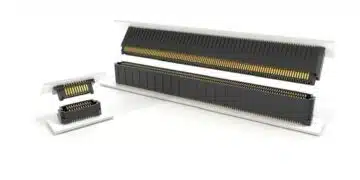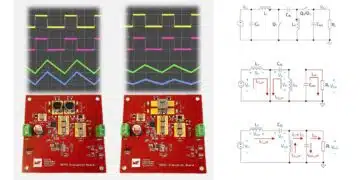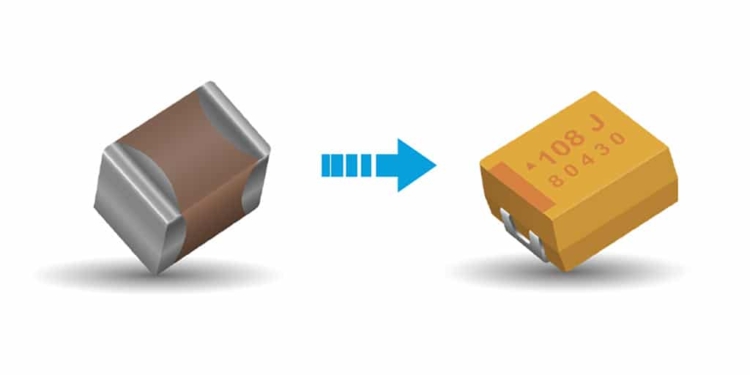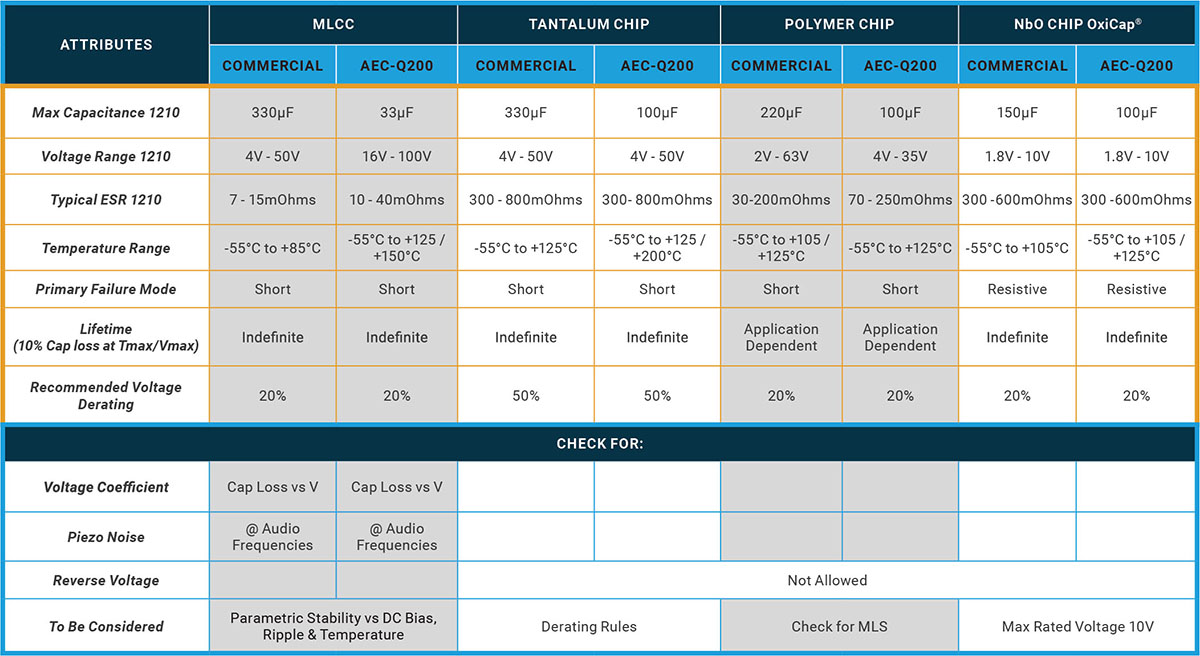Source: AVX news
Tantalum chip and Hi CV MLCC have a large degree of overlap in available capacitance ratings in common footprints. As MLCC production increased, many applications converted from tantalum to MLCC for many filtering, bypass, and hold-up applications. With the increasing demands seen for low voltage digital applications, tantalum electrolytic technologies have become a first choice for MLCC substitution.
PRODUCT SELECTION
Tantalum
AVX is the number one tantalum capacitor supplier with manufacturing plants worldwide providing flexibility and capacity for all electronic industry demands. We are the global leader in MnO2 solid tantalum technology, including the world’s smallest case size tantalum chips, sharing common footprints with Hi CV MLCC.
Polymer
AVX offers a broad range of conductive polymer solid electrolytic capacitors featuring high capacitance with low ESR in standard and low profile case sizes. With a benign failure mode under recommended usage conditions, they are a good choice in MLCC replacement applications.
Niobium Oxide
AVX OxiCap® capacitors are solid electrolytic capacitors using Niobium Oxide (NbO) anode material instead of traditional Tantalum. Niobium is a widely available material and has several advantages over tantalum including a non-short circuit failure mode. AVX OxiCap® is available with low ESR, Hi CV, and small, low profile case sizes for Hi CV MLCC replacement.
AVX ELECTROLYTIC ADVANTAGES
AVX is a leading international manufacturer and supplier of a wide range of advanced electronic components, including: capacitors, inductors, filters, and circuit protection devices. The AVX tantalum electrolytic division has maintained a leadership position in automotive, industrial, medical, space, military, consumer electronics, communications, and transportation markets for nearly 50 years.
DESIGN PARAMETERS
Maximum Available Capacitance by Case Size (6.3V):

Voltage Coefficient:
The capacitance of a Hi CV MLCC will decrease as bias voltage increases. Tantalum, polymer, and niobium oxide show no voltage coefficient effect.

Temperature Coefficient:
The capacitance of a Hi CV MLCC will decrease at both high and low temperatures. Tantalum, polymer, and niobium oxide show no temperature coefficient effect.
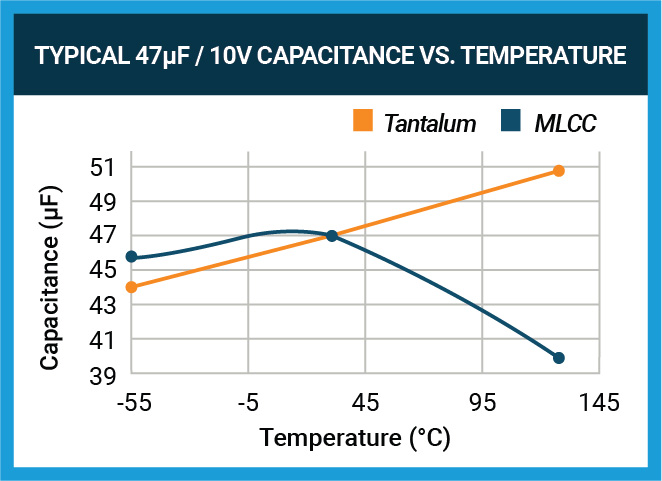
Reverse Bias / Non-Polar Operation:
For non-polar operation, connect two electrolytic capacitors in series back-to-back (typically common negative). Two identical capacitors in series will have half the capacitance of a single capacitor, the same voltage rating, but will now be bidirectional (non-polar).
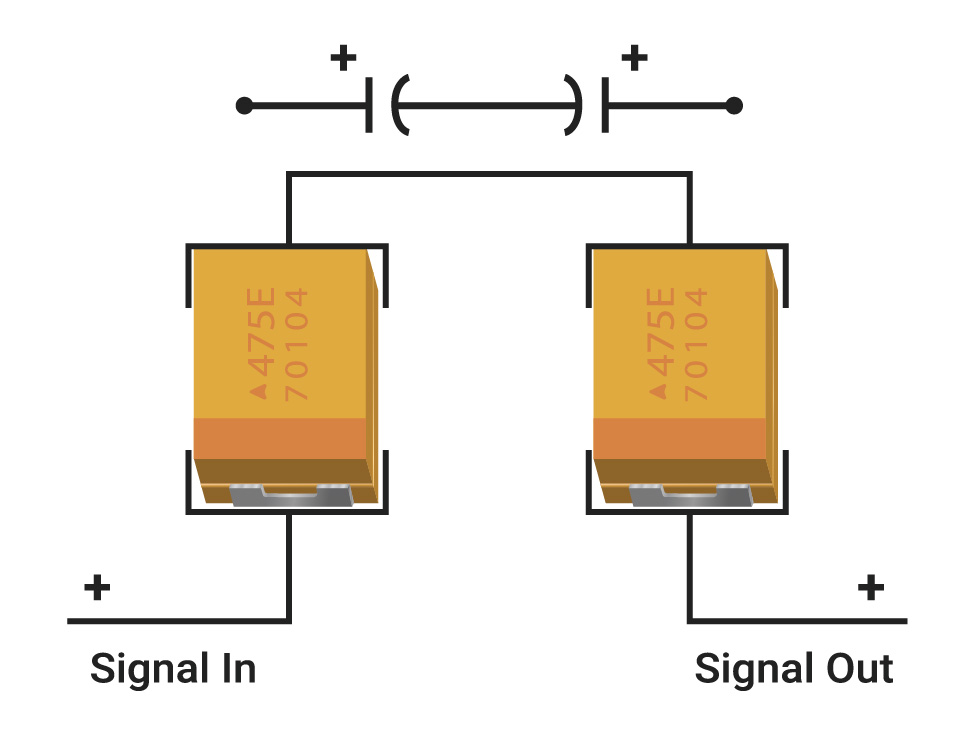
The impedance curve of a Hi CV MLCC has a high Q (sharp resonance) and very low ESR. The impedance curve of tantalum and niobium electrolytic capacitors has a broadband characteristic with low ESR, which increases at low temperatures. The impedance curve of polymer electrolytic capacitors also has a broadband characteristic, but with lower ESR than tantalum and niobium oxide electrolytics, and remains low at low temperatures.
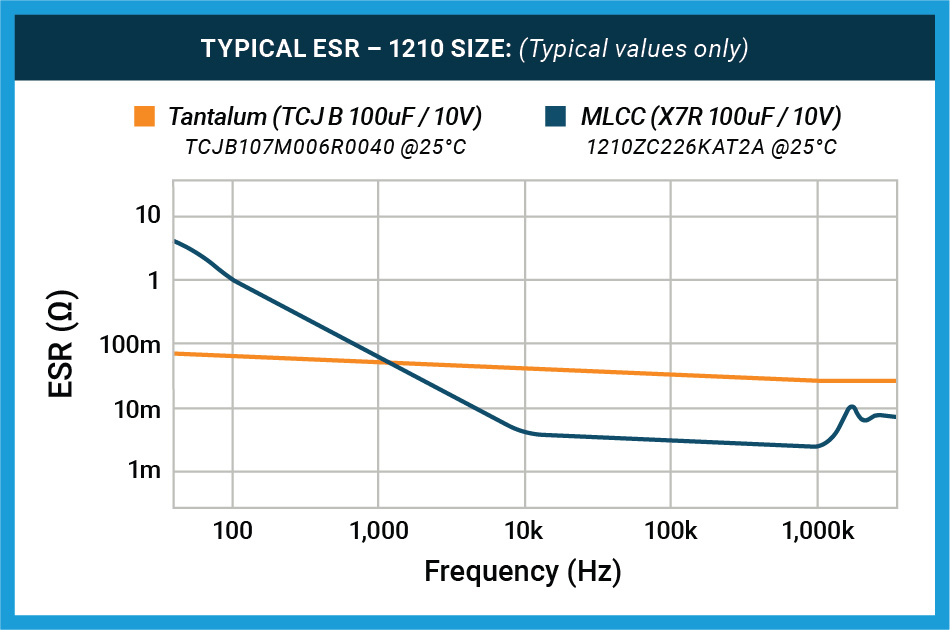
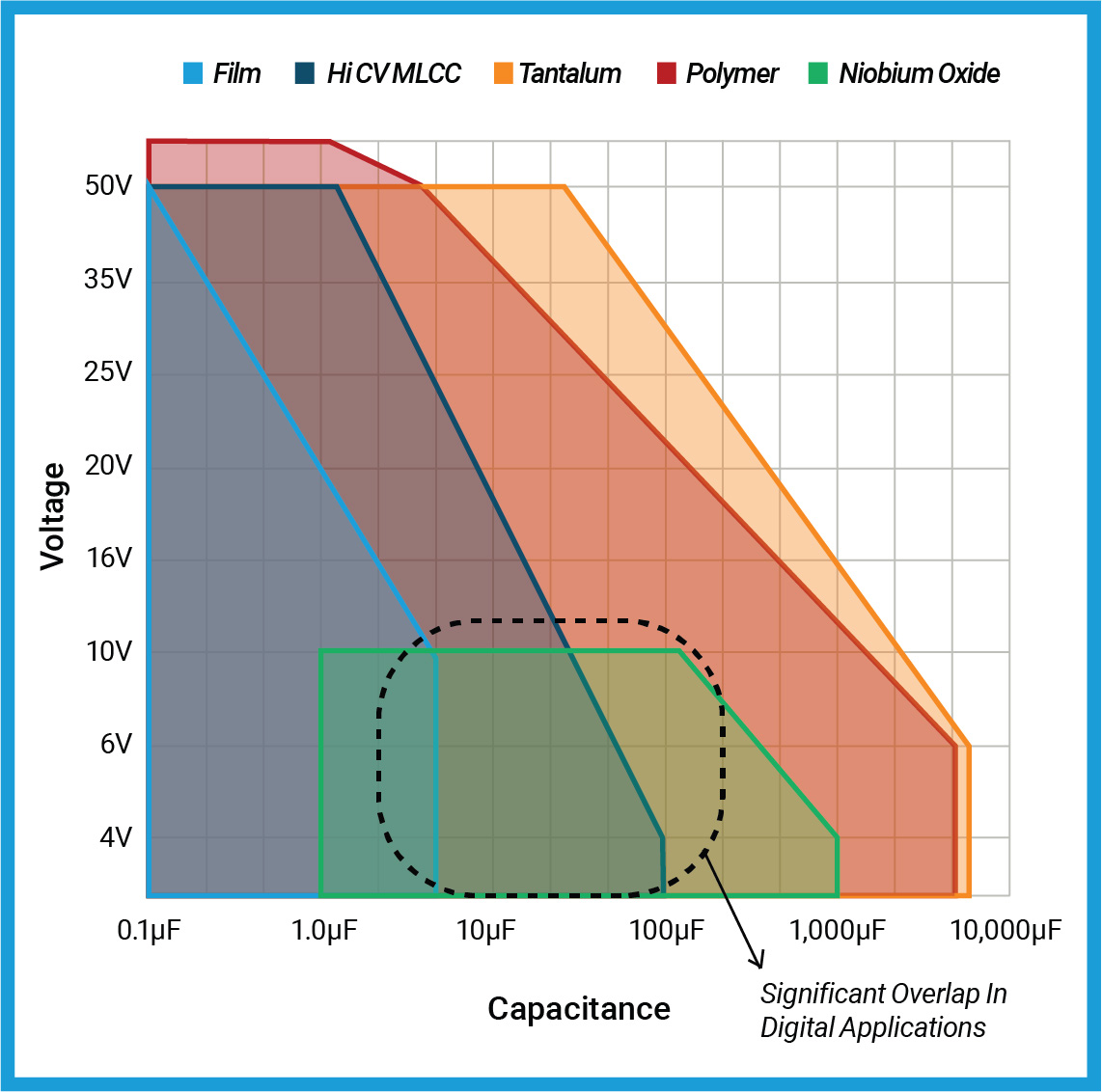
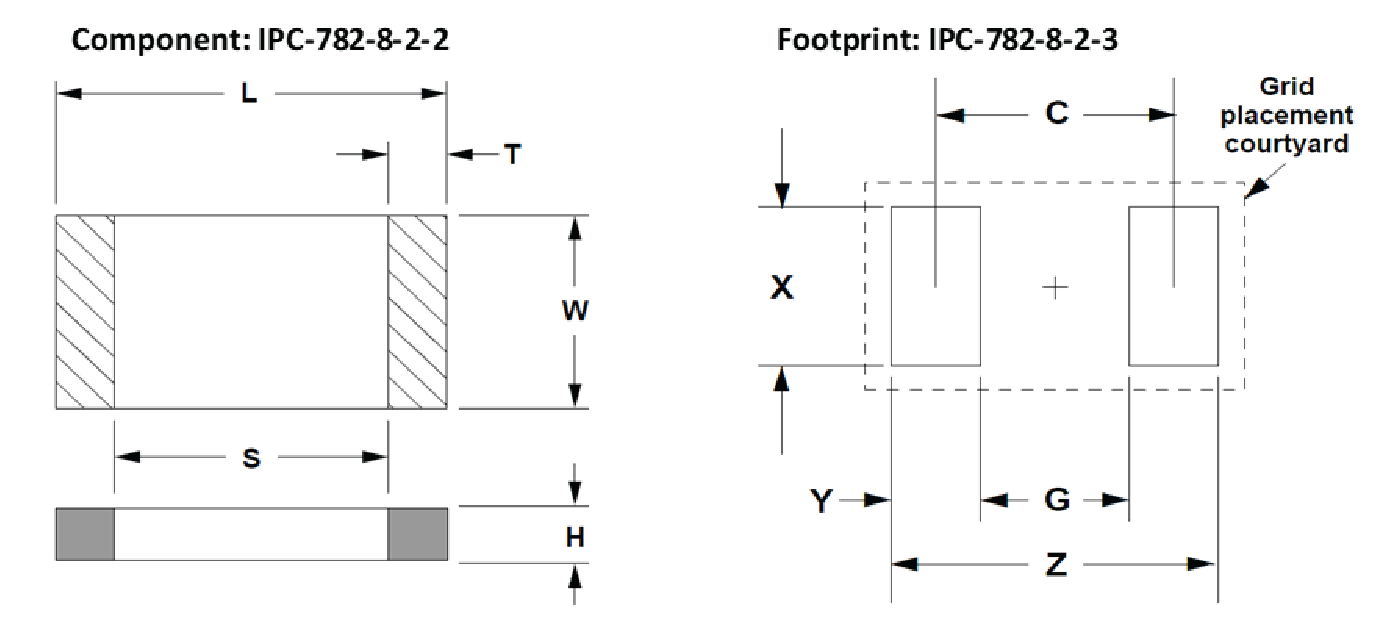
IPC has set a standard of recommended footprints for most classes of surface mount electronic components including resistors, capacitors and inductors. Although many companies develop their own internal footprint guidelines, IPC standards for MLCC and tantalum chip are the starting point.
AVX SERIES – CASE SIZE AVAILABILITY

PDF DOWNLOAD
PDF version is available here.










